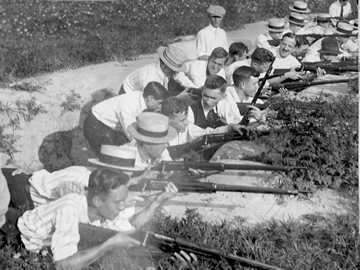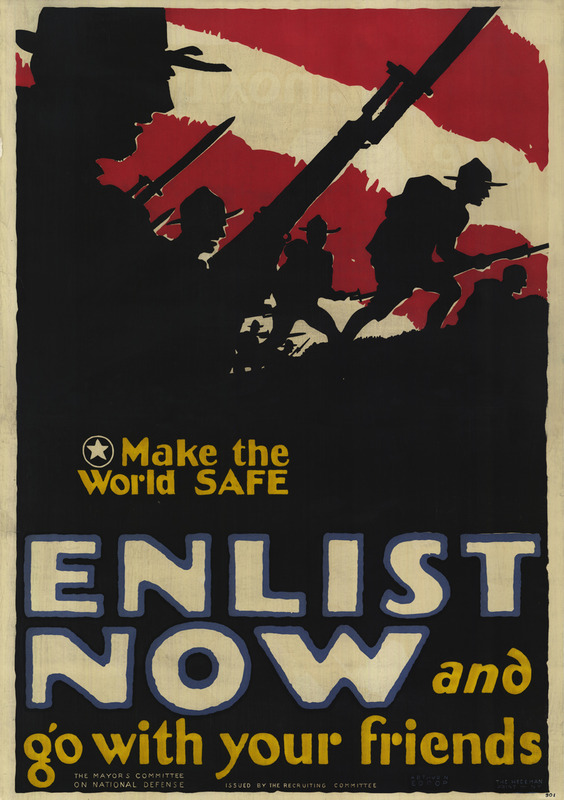Enlist Now and go with your friends
"From 1914 to 1917 the war was distant and exciting for most Americans, their reactions resembling those of a schoolboy reading Ivanhoe; the casualty lists did not reflect the awful annihilation of American manhood as they did reflect the loss of a whole generation of Frenchmen, Englishmen, and Germans. Our part as an ally did not begin until Congress declared war on Germany on April 6, 1917 by a vote of 373 to 50 in the House and 82 to 6 in the Senate, and General Pershing's American Expeditionary Force waited until June, 1918, to fight its first important battle at Chateau-Thierry. The armistice of Compiegne, November 11, 1918, ended the fighting. The romantic impulse could be sustained for this nineteen-month period-there was not time for the kind of horrible attrition to develop which led to the French army mutinies of 1917. Americans could call sauerkraut 'Victory cabbage' and German measles 'Liberty Measles' and still have energy left over for a rousing Red Scare in 1919."
- Charles V. Genthe, American War Narratives, 1917-1918: A Study and Bibliography

Recruits train in Lansdowne, Pennsylvania, 1917.
George D. McDowell Philadelphia Evening Bulletin Collection, Temple University Libraries, Urban Archives.
(image 19 of 45)
United States
ca. 1917-1918
Arthur N. Edrop
101 x 72 cm

